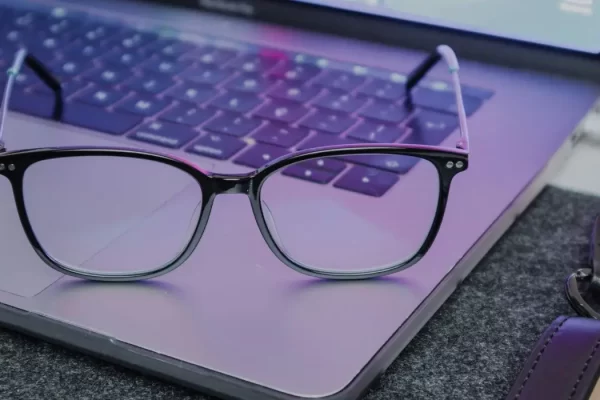How To Manage Glaucoma? (Glaucoma Treatment)
What Is A Glaucoma?
This is a disease where pressure builds up in the eyeball, damaging the optic nerve and causing loss of peripheral vision. It is a chronic condition that can lead to blindness if left untreated. Symptoms of glaucoma include eye pain and headache, vision loss, halos around lights, and colors appearing distorted and dull.
Book an an appointment with us: Contact Us Today!: (714) 996-1136
What Are The Risk Factors For Glaucoma
People who suffer from glaucoma tend to lose their peripheral vision. The disease is typically associated with elevated pressure inside the eye, though it can also occur among those who have normal or low eye pressure.
There are a number of risk factors associated with the development and progression of glaucoma:
- Race/ethnicity
- Family history of glaucoma
- Age
- Congenital defects
- History of injury or eye disease
- Previous cataract surgery
- Diabetes mellitus
- Excessive use of steroid medication
The prevalence of glaucoma tends to increase with age. In general, glaucoma occurs in approximately 3-4% of 40-year-olds, 8-12% of 60-year-olds, and 15-25% of 80-year-olds.
Individuals with any one of these risk factors are not destined to develop glaucoma, but they should be aware of the associated risks and perhaps participate more closely in routine eye examinations.


What Are The Types Of Glaucoma:
1. PRIMARY
Primary glaucoma is one type of the many forms that can be caused by other medical conditions. However, for some people, it doesn’t cause any additional symptoms beyond what’s already present in their eyes due to being an isolated incident or genetic trait which leads them not to find another reason behind their vision loss.
- Open-Angle: is the most common type. The slow loss of peripheral vision, advancing to tunnel vision, and greater vision loss. Many people don’t have any symptoms until they start to lose their vision, and people may not notice vision loss right away.
- Acute Angle-Closure: also called narrow-angle or acute glaucoma. This is an emergency It’sthat requires immediate pressure reduction and likely an incision in the iris which helps drain built-up fluid. This can have the sudden onset of visual disturbance, especially in low light; eye pain, nausea, and vomiting usually from the pain, blurred vision, halos around objects, and redness of the eye.
- Normal-Tension Glaucoma: is a type of open-angle glaucoma that happens in people with normal eye pressure.
- Congenital Glaucoma: in congenital glaucoma, babies are born with a problem in their eye that keeps fluid from draining normally.
2. SECONDARY
In rare cases, this can be caused by another medical condition. This is called secondary glaucomatous optic neuropathy and affects less than 10% of people with this type of vision loss to some degree.
- Neovascular Glaucoma: This is a condition in which the eye produces more vessels than usual, leading to increased pressure. This can be caused by another medical issue such as diabetes or high blood pressure and might require treatment for it before you see your doctor so they know what else needs attention alongside this new development on its own.
- Pigmentary Glaucoma: This happens when the pigment (color) from your iris (the colored part of your eye) flakes off and blocks fluid from draining out of your eye.
- Uveitic Glaucoma: is a condition that can occur in people who have uveitis, but it’s not clear how this happens. Experts think there might be some connection between inflammation and scar tissue on the inside of your eye which blocks fluid flow out through damaged or blocked drainage channels at night when you’re sleeping due to high-pressure buildup during daytime hours leading eventually resulting in vision loss if left unchecked long enough.
- Other Causes: other health conditions like cataracts and tumors can also cause glaucoma. It’s not as common for this condition to develop in someone who has had their eyes examined regularly – so if you notice any changes with your vision or suddenly start having problems seeing things then don’t hesitate to get checked out by an eye doctor.
How To Manage Glaucoma:
Prevention
We all know that prevention is better than cure. So, let’s learn how to prevent it from worsening. The things that can help prevent this are really, general health recommendations including:
- Regular eye care – even with a slight of pain, go get your eyes checked.
- Treat high intraocular eye pressure – regular eye check to find early signs
- Manage your weight – proper exercise can normalize blood pressure. Keep on moving.
- Protect your eyes – glaucoma can develop after being hit in the eye with tennis balls, or flying debris.
- Exercise – decreases blood pressure and intraocular pressure
- Maintain an eye-healthy diet – take in plenty of eye-specific vitamins such as antioxidants like alpha-lipoic acid, bilberry, Vitamins C and E, beta carotene, Omega-3 fatty acids. The herb Ginkgo Biloba may also help support ocular blood flow.
Treatment
The goal of treatment is to reduce intraocular pressure, which can be achieved through medication or surgery. In some cases, treatment may be sufficient to maintain stable vision, or in other cases, it may be possible to improve vision following treatment.
If you are found to have glaucoma, laser treatment for glaucoma and glaucoma treatment eye drops will be prescribed to manage it. Frequent eye checkups are also advised as this is how the symptoms can be detected early and prevented from worsening.
Laser Treatment For Glaucoma


If diagnosed early, laser treatment for glaucoma or surgery may be able to prevent it from worsening and can sometimes be used to treat the condition. The laser procedure will be performed if only one eye is affected, when glaucoma in both eyes cannot be controlled using a 2medication, or when the medications are causing harmful side effects.
Laser surgery for glaucoma may involve creating a new drainage channel for fluid or implanting a device called a shunt to drain fluid. This can help lower pressure in the eye and reduce symptoms.
Surgery
Sometimes, even after trying different medicines and other treatments to take out the fluid from your eye; surgery might be needed. There are several types of surgeries where they can drain this liquid so it doesn’t cause any more problems inside or outside the body!
Glaucoma Treatment Eye Drops
Photo: Eye Drops Treatment for Glaucoma
Eye drops for glaucoma can be either prescription or over-the-counter. Your doctor will prescribe the most suitable option depending on how much pressure is in your eyeballs and how likely you are to follow the treatment regimen diligently. One of the main benefits of eye drops for glaucoma is that they can be used together with other treatments such as laser treatment for glaucoma.
An important step in how to manage glaucoma is making sure you properly wash and dry your hands before using the eye drop bottle and applying the drops correctly:
- To begin with, tilt your head back slightly and pull down on your lower eyelid.
- Place the tip of the bottle close to the eye without touching it.
- Gently squeeze the bottle so that one drop falls into your lower eyelid.
- Release the eyelid and close your eyes for two or three minutes without blinking to prevent more liquid from draining out of your eyeballs.
- Repeat this process in your other eye if you are using the drops in both eyes.
It is important to note that you should never touch the dropper against your eye, as this can lead to infections.
It is important to maintain a healthy body weight so diabetes and hypertension don’t develop, which can lead you to a higher risk for several health problems including glaucoma. It has no cure but it CAN be treated successfully if diagnosed early enough with optimal nutrition and supplements in place. I cannot stress enough then- how crucial regular eye exams are as well as maintaining an Eye-Healthy diet along with all the right nutrients from food sources like omega 3 fatty acids found abundantly within salmon or other types of fish oils! It’s never too late to take care of your eyes. Regular exams are important!
Come And Visit Our website to book an appointment. Contact Us Today!: (714) 996-1136








